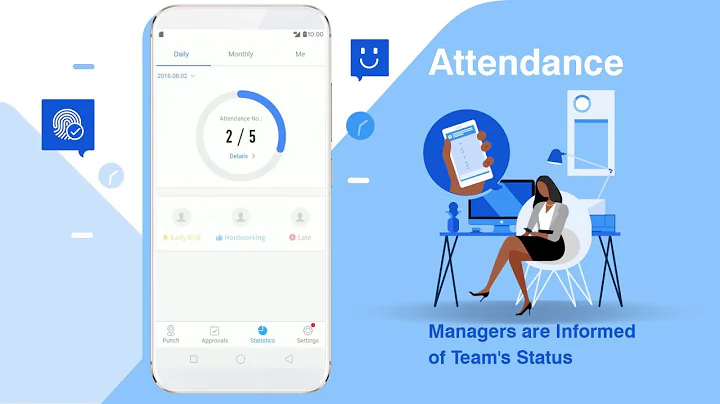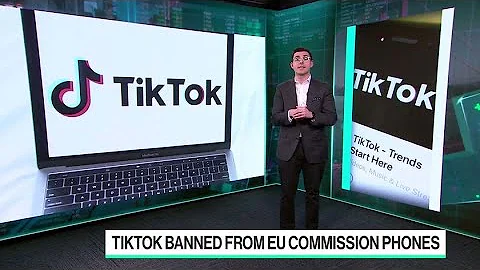Recently, a piece of news stated that DingTalk released a fee strategy adjustment announcement. Starting from July 1, the maximum number of free users of DingTalk Basic Edition will be adjusted to 10 people. One day after the news was sent out, DingTalk responded: It is false news. The fee adjustment is for "DingTalk Project" (Teambition), a project management function within DingTalk. The basic version of DingTalk is still free. Is this a false alarm or asking for advice? Although DingTalk has given an explanation, its determination to accelerate its commercialization is already obvious.

To If the B ecosystem wants to continue to operate well, it must be inseparable from healthy commercialization. 2022 is known as the first year of accelerated commercialization of collaborative office and . DingTalk has also taken a key step towards commercialization in its seventh year of establishment. Coincidentally, enterprise WeChat has also begun to make major adjustments to its charging strategy, changing the platform commission system to charging based on user accounts, which has made users feel insecure and triggered heated discussions in the market.
Different from the C-end market, the resistance to commercialization in the B-end collaborative market lies not only in the product itself, but also in the pressure from powerful competitors. Although DingTalk and WeChat Enterprise each have different commercialization logics, it is difficult for these Internet giants to try to seize the share of traditional manufacturers because the B-end market has first-mover advantages and product dependence is generally high, and they are usually not easy to replace. .
An industry insider said that the B-end market values professional services and technical strength. In this market, the charging model should be taken for granted, and high-value professional service companies are also willing to pay to build a healthy business model. First use free to attract traffic, and then wait for opportunities to charge. This is the usual thinking of Internet companies in the C-side market. It is definitely not suitable to put it on the B-side.
It is more reasonable to pay for value
In the past two decades, China Mobile Internet has achieved great success and formed a set of methodologies, that is, companies build products, then earn traffic through subsidies, and the traffic pool becomes larger, and ultimately Realize payment through other means. This may be one of the reasons why DingTalk and Enterprise WeChat are free first and then start exploring commercialization, but this model is not suitable for To B commercialization.
has a view that free services cannot grow the To B service ecosystem, and charging is conducive to the positive circulation of business, and good money drives out bad money. Both to C and To B products need to be commercialized, but the ability to achieve commercialization is different. Because the purchase decision-making chain of To B products is more complicated, there are usually multiple roles and cumbersome purchasing processes, while To C products are more about real-time scenario payment.

An enterprise customer shared his views on free SaaS. He said that when a customer hears that the software they want to buy is free, the first thing that comes to mind is whether there are any traps, such as data leaks, etc. The second thing is whether the service can keep up. The most important thing is, how do free software companies make money, and will they go bankrupt over time? I would rather pay for To B products, which is much more secure. Practitioners related to
also said that charging should be the most normal To B logic, and adding various methods for free will only damage the industry. Enterprise services should be paid, and free enterprise services cannot continue. Enterprise services are a real long-cycle, value-oriented track. Behind the digitalization of the industry, there is a need for medium- and long-term support for digital industrialization and continuous investment in technology, product services, business models, etc. Only models that can charge fees are normal business models.
Nowadays, the collaborative office industry has begun to return to its commercial nature. Only by deepening the value can giants get big prices. Traffic thinking has lagged behind. What can impress B-side customers is more tangible things such as product services and experience. Corporate customers will also vote with their feet whether the money they pay is worth it. The key point is whether the platform can provide continuous protection, actively shield risks, and bring long-term value.
The long-termism of established manufacturers
Compared with new OA manufacturers represented by DingTalk and Enterprise WeChat, established manufacturers such as UFIDA and Kingdee that have been deeply involved in the industry for 20 to 30 years are more stable on the commercialization path.There is nothing wrong with commercialization in itself. An excellent to B ecosystem is a win-win logic. To B service providers should deepen their respective moats in terms of platform users, customers, and ecology, and the monetization potential will be continuously stimulated.
enterprise services, in the final analysis, are customer-centered, and the core is to create products that meet customer needs and are recognized by customers. Whether a customer success-centered, long-term sustainable development ecosystem can be established is one of the important indicators to measure the future success of a To B company. If the product boundaries are blurred and the product is not developed deeply, it will not be able to meet the real needs of customers.
takes UF as an example. It has established rules and boundaries in advance. Free services will always be free, and paid services will always be paid. Although it may bring growth pressure in the short term, in the long run, developing payment habits as early as possible will lead to a long-term business. model. The platform should fulfill its platform responsibilities and not cross the line. As long as it is empowered, it can promote the further prosperity of SaaS and ISV.
needs to be deeply cultivated in the enterprise market and needs to understand the office scenarios, business models and organizational structures of different industries. Collaboration scenarios within an enterprise can be enumerated exhaustively. Since they can be enumerated, management methodologies can be precipitated. As many sets of methodologies are precipitated, as many sets of logic for using tools can be abstracted. UFIDA's long-term development has brought rich scenario-based applications deep into the "capillaries" of enterprise digitalization. With the professional depth and ecological strength of UFIDA's BIP business innovation platform, it can meet a variety of digital scenarios.

is different from Internet cross-border products. UFIDA has rich functions, an open platform with strong compatibility, and can also safely and conveniently integrate other system applications, such as OA, finance, human resources, assets, enterprise self-developed systems, third-party systems, and industrial chains. etc. According to reports, DingTalk is slightly lacking in integration and has high integration costs. Its DNA is to solve team communication problems. It is still lacking in corporate collaborative office and business management, which is the inherent advantage of professional manufacturers.
Whether it is SaaS products or SaaS services, they are valuable. Since they are valuable, they must have a price. UFIDA has always insisted on using win-win thinking to build products and connect the ecology, and provides customers with digital transformation tools. At the same time, its own corporate management and operations also have room for efficiency improvement. The platform further attracts high-quality customers and forms a scale by integrating resources. effect, achieving cost reduction and efficiency improvement.
Win-win results achieve the future
Looking at the past big data sales, violent commissions, etc., Internet platforms made mistakes in the to C market because they only saw profit-driven development and expansion through horse racing and encirclement, and then put the user as the center It has become platform-centric, subtracting in terms of providing high-quality services, and adding in terms of extracting user value, thus giving rise to various "harvesting" phenomena.
The payment strategies adjusted by DingTalk and Enterprise WeChat are exactly the same as when the Taobao service market changed from charging based on transaction ratio to charging based on interface calls. This change is a demonstration of refined capabilities, but the steps are slightly larger. At present, the overall volume of the service market is relatively not large and comprehensive enough. Next, the service platforms of powerful large enterprises will continue to lead and grow. The
platform is profit-seeking, and customers are also profit-seeking. Only by finding a balance can both parties develop healthily. The biggest difference from the To C market is that the needs of corporate customers are usually highly complex and highly personalized. Standardized products often cannot fully meet the actual needs of corporate customers, resulting in a high proportion of customization, which has become a common business for To B companies in the industry. Difficulties and pain points.
Referring to overseas markets, a very important indicator of the success of commercialization depends on whether it can be selected and continued to be selected by large companies. For example, Salesforce, in 2003, its customer base was concentrated in small and medium-sized enterprises, which brought it a revenue of 510 million US dollars. By 2015, its customer base was more concentrated in large enterprises, preferring customized services, and brought it a revenue of US$510 million. Revenue was $5.37 billion.
Large enterprises have high demands for stability and customization, and what they test is their ability to provide in-depth services.Judging from UF's commercialization path, this is precisely UF's current advantage in serving growing enterprises and large state-owned enterprises and central enterprises in their digital and intelligent transformation, which is also consistent with Salesforce's commercialization thinking to a certain extent. UFIDA’s free basic products are often used to attract traffic, and high-value professional services have always been paid. Paid services do not require customers to pay for products, but to pay for the value of professional services.
From an enterprise's perspective, when choosing B-side services, they will focus on collaborative office platforms that can be customized for themselves and can closely meet their own needs. They will pay for excellent applications and pay for value. Therefore, whoever can provide better assistance to enterprises in terms of services, management, and operating mechanisms in the future will be closer to profitability and more likely to be promoted to the forefront of the industry.
From the perspective of long-term development of To B enterprises, it is more important to build enterprise-level operational capabilities oriented towards customer success. On the basis of continuously acquiring customers to increase the flow of customers, retaining customers to prevent loss, and making the bucket watertight, we have established a set of executable and monitorable operation management and execution systems to effectively implement the management and control scenarios, and ensure business capabilities through digitalization. Provide comprehensive coverage and support to achieve accurate data analysis and efficient decision support, achieving the goal of providing customers with the best experience and achieving a win-win situation.





















